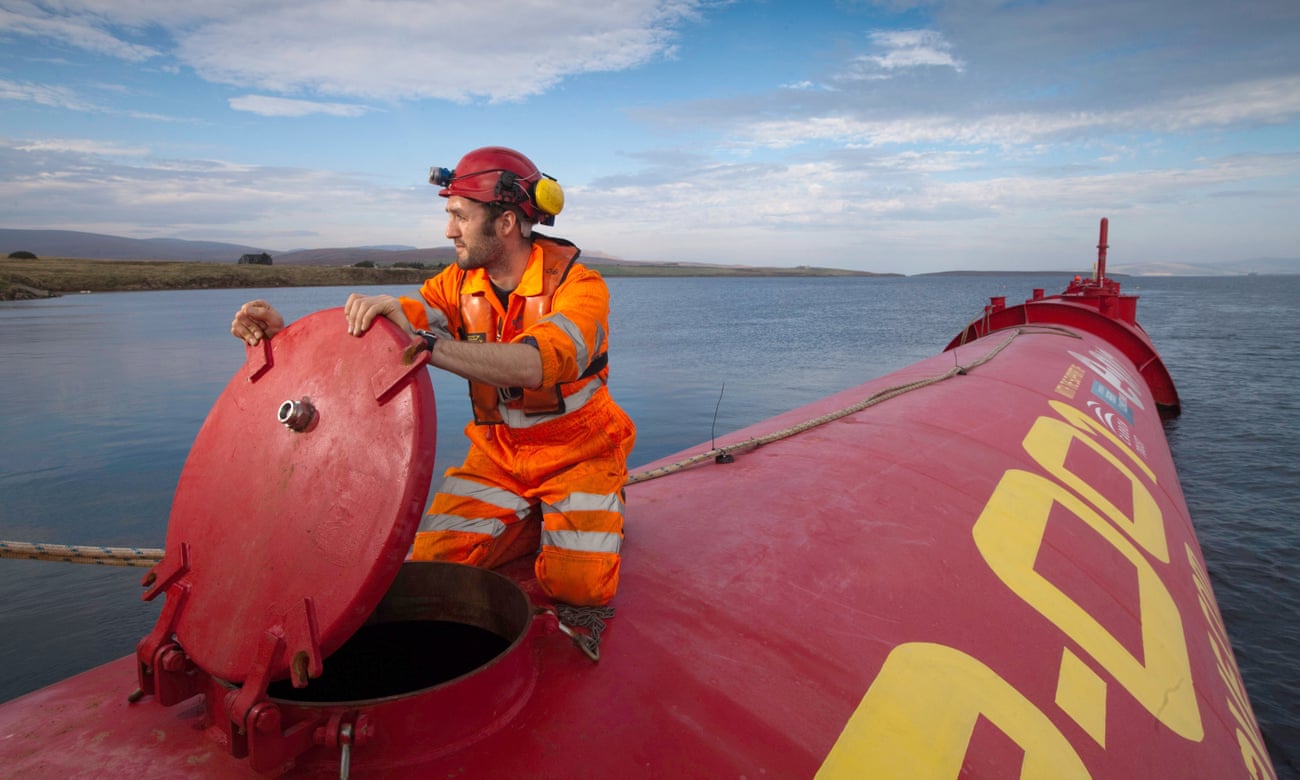How Orkney leads the way for sustainable energy

A tech revolution – and an abundance of wind and waves – mean that the people of Orkney now produce more electricity than they can use. on the Pelamis wave power converter in Orkney. Photograph: Steve Morgan/Alamy Stock Photo
It seems the stuff of fantasy. Giant ships sail the seas burning fuel that has been extracted from water using energy provided by the winds, waves and tides. A dramatic but implausible notion, surely. Yet this grand green vision could soon be realised thanks to a remarkable technological transformation that is now under way in Orkney.
Perched 10 miles beyond the northern edge of the British mainland, this archipelago of around 20 populated islands – as well as a smattering of uninhabited reefs and islets – has become the centre of a revolution in the way electricity is generated. Orkney was once utterly dependent on power that was produced by burning coal and gas on the Scottish mainland and then transmitted through an undersea cable. Today the islands are so festooned with wind turbines, they cannot find enough uses for the emission-free power they create on their own.
Community-owned wind turbines generate power for local villages; islanders drive nonpolluting cars that run on electricity; devices that can turn the energy of the waves and the tides into electricity are being tested in the islands’ waters and seabed; and – in the near future – car and passenger ferries here will be fuelled not by diesel but by hydrogen, created from water that has been electrolysed using power from Orkney’s wind, wave and tide generators.

